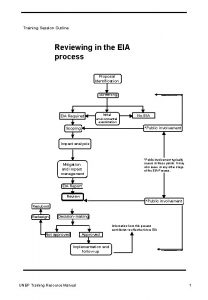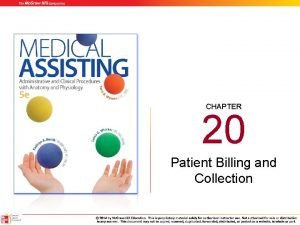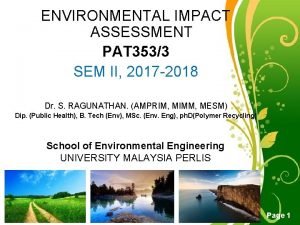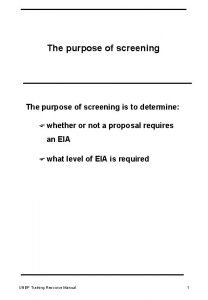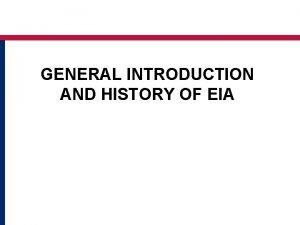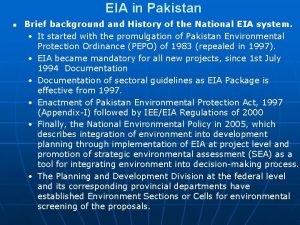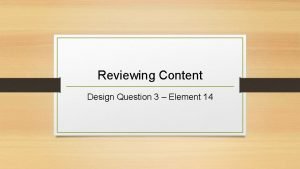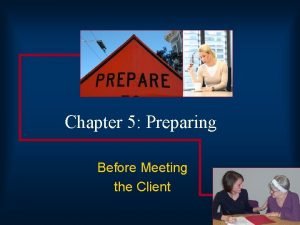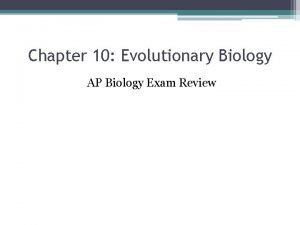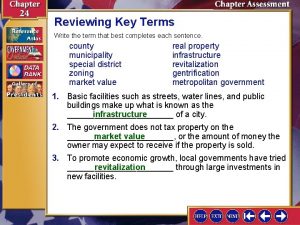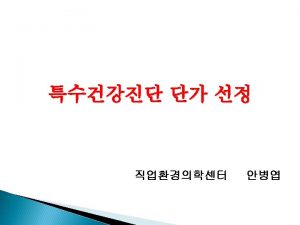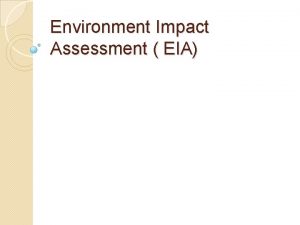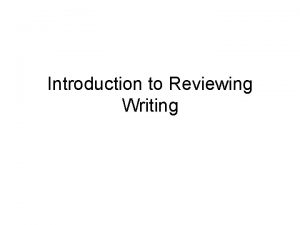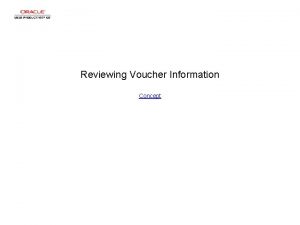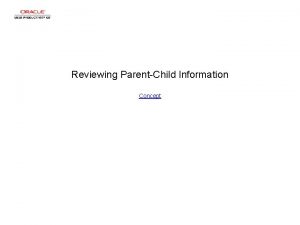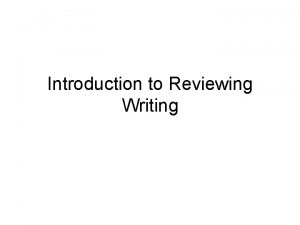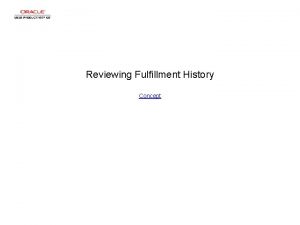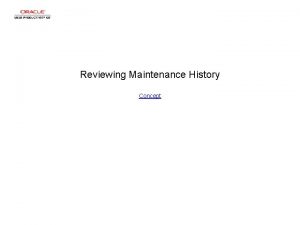Training Session Outline Reviewing in the EIA process










- Slides: 10

Training Session Outline Reviewing in the EIA process Proposal Identification Screening EIA Required Initial environmental examination No EIA *Public involvement Scoping Impact analysis Mitigation and impact management *Public involvement typically occurs at these points. It may also occur at any other stage of the EIA Process. EIA Report Review *Public involvement Resubmit Redesign Decision-making Information from this process contributes to effective future EIA Not approved Approved Implementation and follow up UNEP Training Resource Manual 1

Purpose and objectives of review F The purpose of the review process is to establish if the information in an EIA report is sufficient for decision-making. F Key objectives are to: - review the quality of the EIA report - take account of public comment - determine if the information is sufficient - identify any deficiencies to be corrected UNEP Training Resource Manual 2

EIA review – aspects for consideration F compliance with terms of reference F information is correct and technically sound F account taken of public comments F complete and satisfactory statement of key findings F information is clear and understandable F information is sufficient for decision- making UNEP Training Resource Manual 3

EIA review – types of procedure F Internal review: - low operating costs - can lack rigour and transparency - often no documentation of result. F External review - independent, expert check on EIA quality - more rigorous and transparent - report on sufficiency or deficiency UNEP Training Resource Manual 4

EIA review procedures F environmental agency F independent panel (or moderator) F standing commission F inter-agency committee F planning authority UNEP Training Resource Manual 5

EIA review – steps to good practice F set the scale of the review F select reviewer(s) F use public input F identify review criteria F carry out the review F determine remedial options F publish the review report UNEP Training Resource Manual 6

EIA review criteria The following can be used (in order of priority): F Terms of Reference F EIA reports of comparable proposals F other guidance including: - EIA requirements, guidelines and criteria - principles of EIA good practice - knowledge of the project and typical impacts UNEP Training Resource Manual 7

Carrying out the EIA review F A four-step approach can be followed: Step 1: identify the deficiencies Step 2: focus on critical shortcomings Step 3: recommend remedial measures Step 4: advise on implications for decision-making (The last step does not apply in all systems) UNEP Training Resource Manual 8

EIA review methods F general checklists F project specific checklists F review packages F expert and accredited reviewers F public hearings F extended UNEP Training Resource Manual review frameworks 9

A rating scale for EIA review UNEP Training Resource Manual 10
 Training session outline
Training session outline Chapter 20 patient collections and financial management
Chapter 20 patient collections and financial management Eia processes
Eia processes Eia process flowchart
Eia process flowchart Eia process flowchart
Eia process flowchart Eia process in pakistan
Eia process in pakistan Chapter 5 section 4: the minor parties answer key
Chapter 5 section 4: the minor parties answer key Reviewing content marzano
Reviewing content marzano Preparatory consulting social work
Preparatory consulting social work Reviewing key concepts reproductive barriers
Reviewing key concepts reproductive barriers Reviewing key terms
Reviewing key terms
